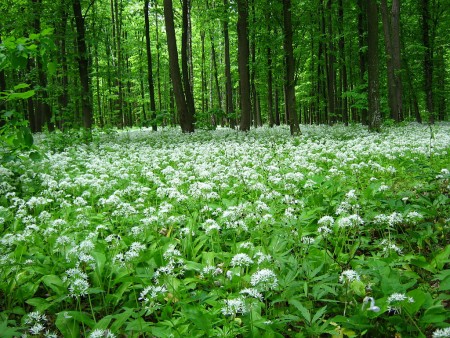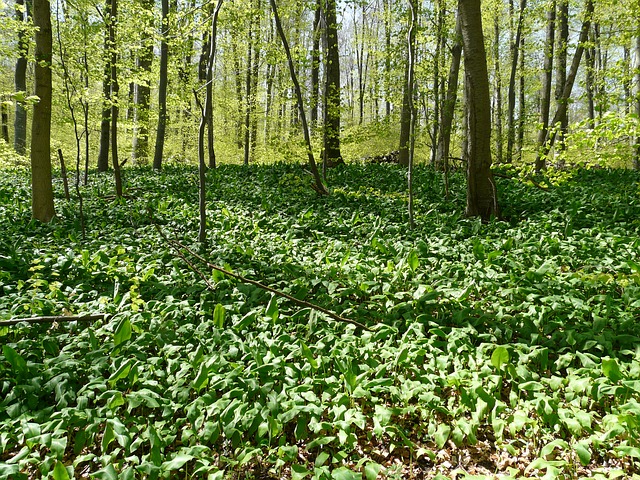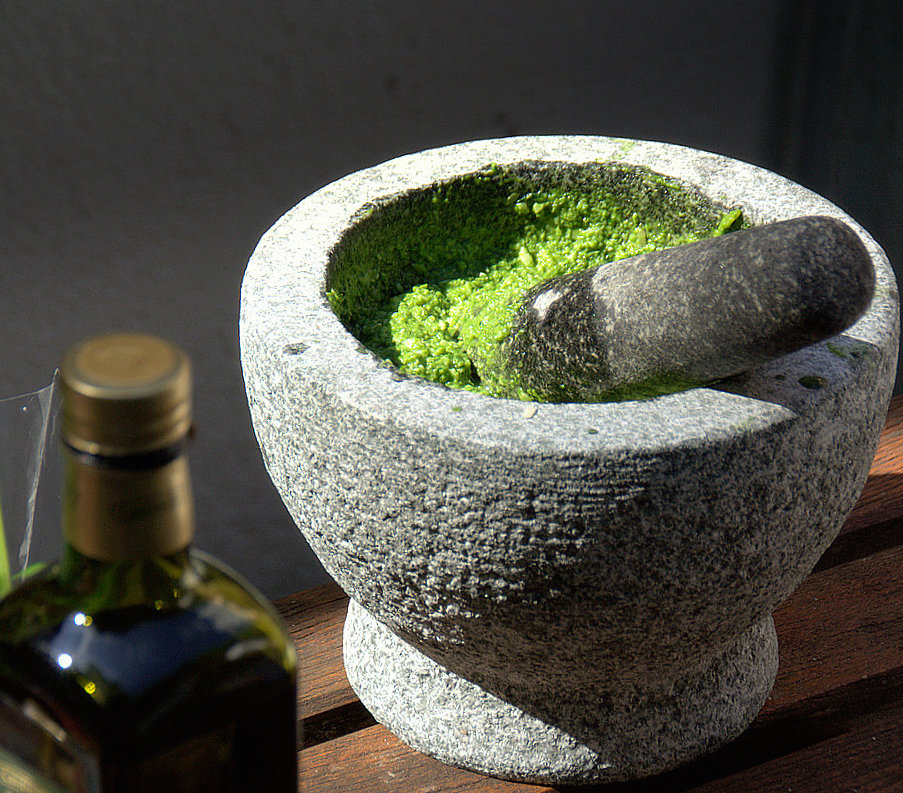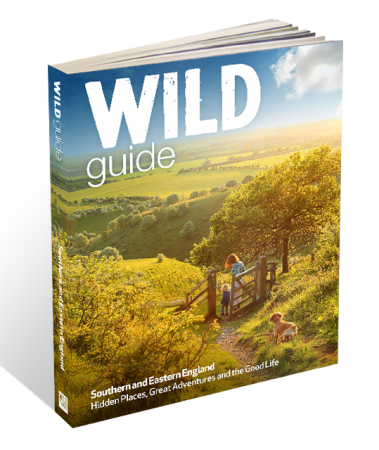Bringing foraged goods back to the kitchen table is rewarding and a great way to achieve a sense of well-being. Equipped with a bag and a knife, a woodland walk can supply a great addition to your kitchen shelves. If you’re looking to give wild food a go, wild garlic, aka ramson, should be at the top of your foraging to-do list. It is easy to identify and absolutely delicious – not to mention its wholesome smell. You’ll probably catch its scent on the wind before you spot it.
Season for garlic is short, beginning in April and ending by June. Find it in moist corners of the woodland, often near patches of bluebells. Where you find one plant, you normally discover a sea of the green stuff spilling across the forest floor. Look out for its long, pointy, drooping green leaves and white flowers towards the end of spring. If in doubt, gently rub the leaf to release the familiar scent of garlic. Unlike domestic garlic you don’t eat its bulbs – its the the fresh leaves that are prized. The characteristic white flowers however, are perfectly edible although the plant is at its best before too many flowers appear, signalling tougher leaves and a more bitter flavour. It is slightly more subtle than standard garlic and adds a wonderfully tangy flavour to dishes. According to folklore, garlic is a great way to ward off vampires too…
To harvest, cut the green leaves and stems at the base. Stick your haul in your pocket or bag and wash under a tap once home. You can store in a jar filled with water for three or four days without losing its freshness and it keeps well in the fridge too. Sprinkle over potatoes, chop up into a risotto or make fresh pesto for store cupboard essentials.
Wild Garlic Pesto
Makes 3 jars.
Ingredients:
200g cashews
200g wild garlic
100g Parmesan, grated
200ml olive oil
Method:
1. Dry roast the cashews in a frying pan until golden.
2. Wash your garlic, and remove the stems. Put into a processor (or crush in a pestle and mortar) with the cashews and blend until you get a rough paste. Add the parmesan and pulse.
3. While blending, slowly add the oil. Season with salt and pepper and blend some more.
4. Transfer pesto into sterilised jars and cover with olive oil to seal it.
5. Keep in the fridge for up to three weeks. You can freeze some and save for later, too.
Our Wild Guides include the best places across the UK for foraging. Our new Wild Guide: Southern and Eastern England (£15.99) is publishing on 18th May.
[social_share/]





